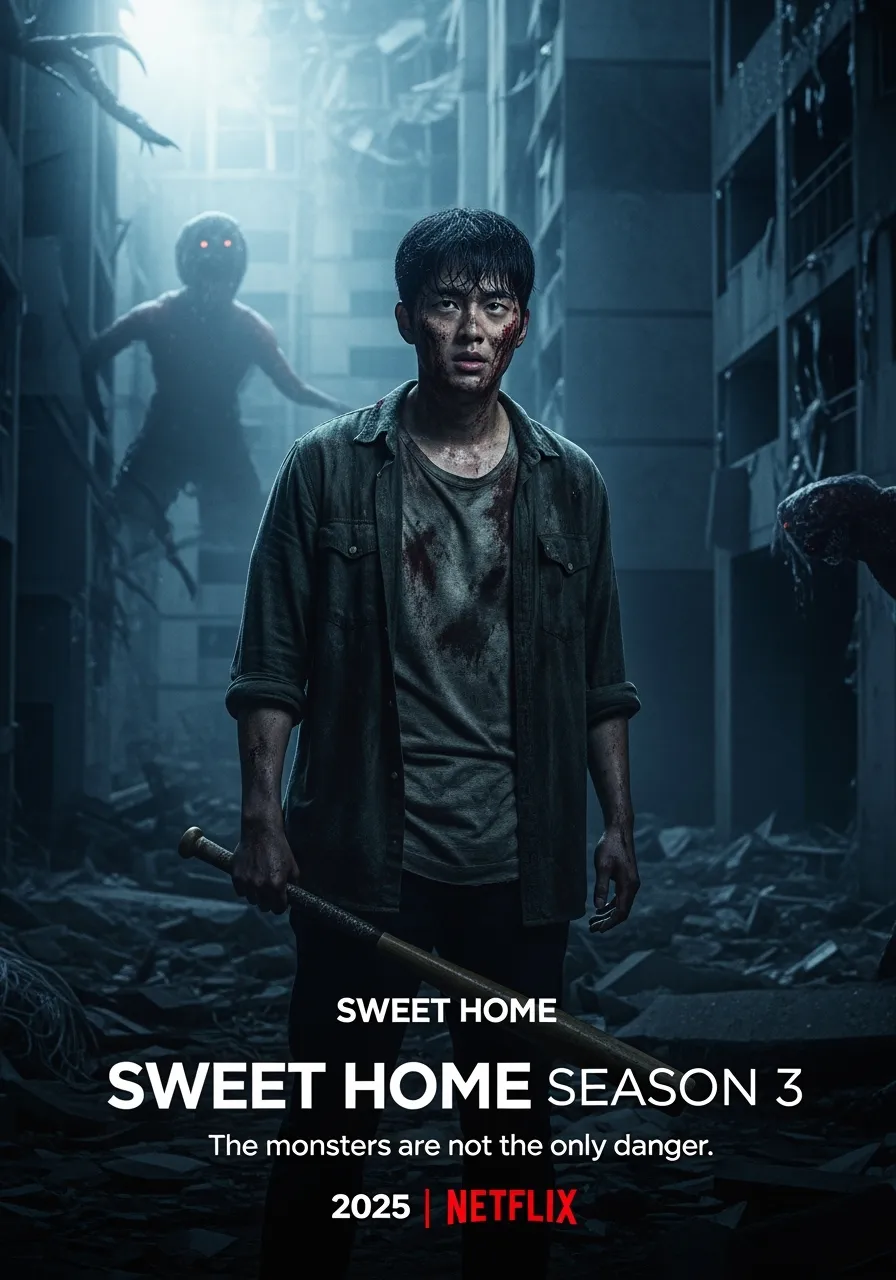What if the real monster was never in the forest… but in a courtroom?
In a landscape saturated with overused werewolf clichés and CGI-driven horror, Wer emerges as a surprisingly grounded, brutally intense, and thematically rich reimagining of lycanthropy. Directed by William Brent Bell (The Devil Inside), this 2013 horror-thriller pivots away from myth and mysticism, instead opting for a clinical, near-documentary realism that renders the terror eerily plausible. What results is a slow-burn narrative that builds with legal drama precision before erupting into a full-blown survival horror that challenges the boundaries between science, folklore, and human morality.
🧠 Plot Overview: From Cold Case to Cold-Blooded Reality
The story opens with a horrific crime in rural France: an American family is found savagely torn apart, with only the mother surviving in a state of shock. Suspicion quickly lands on a local outcast, Talan Gwynek — a massive, seemingly feral man with a rare condition that causes excessive hair growth and immense strength. Defense attorney Kate Moore (played by A.J. Cook) is assigned to represent Talan, believing the evidence is circumstantial and laced with xenophobia and prejudice.
As Kate, along with her investigator Eric and forensic specialist Gavin, delves deeper, the case becomes far more complex. There are hints of a cover-up, ancient family secrets, and a series of unexplained disappearances surrounding Talan’s village. What begins as a procedural legal defense soon morphs into a nightmarish unraveling of something primal and uncontrollable — especially when Talan violently transforms while in custody, sparking a bloody rampage that confirms everyone’s darkest suspicions… or perhaps reveals a truth no one was ready to face.
🎥 Aesthetic Direction: Horror Grounded in Reality
Wer doesn’t indulge in the gothic romanticism or full-moon transformations common in most werewolf media. Instead, it draws visual inspiration from police bodycam footage, crime scene reconstructions, and sterile interrogation rooms. The result is unsettling — we’re not watching a “monster movie”; we’re watching a clinical case study spiral into chaos.
The transformation scene, arguably the film’s centerpiece, is not drenched in magical flair — it’s a brutal, biologically plausible mutation, captured in fluorescent-lit horror within a police precinct. No howling under the moon. No silver bullets. Just the terrifying possibility that what we label as myth may have a scientific counterpart we don’t understand — and certainly can’t control.

🎭 Performances: Terror in the Eyes, Not Just in the Blood
Brian Scott O’Connor’s portrayal of Talan is hypnotically terrifying. A towering presence with almost no dialogue, he conveys menace, pain, and ambiguity through silence and stillness. There is a persistent question lingering in every scene he appears in: is this man truly a monster, or merely a product of society’s fear of the other?
A.J. Cook’s Kate is the emotional and moral anchor of the story — rational, empathetic, yet increasingly overwhelmed by the nature of the truth she uncovers. Vik Sahay and Sebastian Roché round out the cast with grounded, believable performances that help maintain the film’s tone of realism, even as it descends into violent chaos.

🧬 Themes and Interpretations: Who Is the Real Predator?
Beyond its horror set pieces, Wer poses deeply uncomfortable questions. What do we do with anomalies — with people who don’t fit the medical, social, or physical molds we’ve built? Is our justice system capable of handling the irrational, the biological unknown, or even the ancient?
The film touches on genetic disorders, autoimmune conditions, and the idea that ancient curses might be misunderstood evolutionary anomalies. There’s a heavy undercurrent of moral relativism: if Talan is sick, is he guilty? If he was driven to isolation by society’s revulsion, does he deserve our compassion or fear?
This isn’t just about a werewolf. It’s about what happens when law, science, and myth collide — and the collateral damage that results when none of them can fully explain what we’re dealing with.

🩸 Violence and Horror: Controlled, Then Unleashed
Make no mistake — Wer is not for the faint of heart. The second half of the film explodes with raw, realistic violence that mirrors the pacing of films like 28 Days Later or The Descent. But what makes it powerful is the contrast: the quiet procedural tension of the first hour makes the violence that follows all the more shocking and earned. There’s no comic-book gore or stylized horror. Every wound looks painful. Every scream feels real. Every death carries weight.
🧾 Final Verdict: A Hidden Gem in Horror Cinema
Wer is that rare creature in horror cinema — a genre film that doesn’t rely on jump scares or cheap mythology, but instead finds its terror in plausibility. It’s smart, atmospheric, and ultimately disturbing in a way that lingers long after the credits roll. While it may have flown under the radar upon release, it stands as a fresh take on the werewolf genre that dares to be cerebral, brutal, and morally complex.

If you’re looking for a mindless monster movie — this isn’t it. But if you’re craving a horror film that respects your intelligence and rattles your instincts, Wer deserves your attention.
🔍 Film Details
-
Director: William Brent Bell
-
Writers: William Brent Bell, Matthew Peterman
-
Cast: A.J. Cook, Brian Scott O’Connor, Sebastian Roché, Vik Sahay
-
Genre: Horror, Thriller, Legal Mystery
-
Runtime: 89 minutes
-
Rating: R (for bloody violence and disturbing images)
⭐ Rating: 8.0/10 – Underrated, unnerving, unforgettable.
#Wer2013 #WerewolfRedefined #SmartHorror #BiologicalTerror #WilliamBrentBell #AJCook #MonsterInCourtroom #HiddenHorrorGem #ScienceVsMyth #ElevatedHorror
-1750037348-q80.webp)
-1748427036-q80.webp)

-1747716802-q80.webp)
